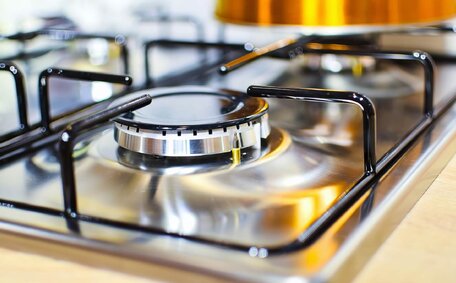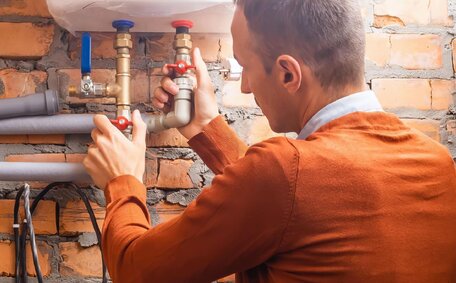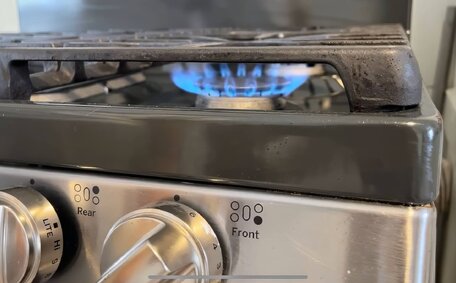Why Sump Pumps Are Important For Preventing Basement Flooding
Sump pumps play a vital role in keeping basements dry and preventing flooding during heavy rains or water table rise. As the lowest level of a home, basements are especially vulnerable to water intrusion and damage. Sump pumps provide an active defence against this risk.
A sump pump works by collecting water that seeps into the sump pit, then pumping that water away from the home’s foundation and out to a safe discharge area.
The sump pit is a reservoir that’s dug into the basement floor and lined with concrete, tile, or plastic. At the bottom of the pit is a pump controlled by a float switch. When enough water enters the pit, the float rises and triggers the pump to turn on and push the water out through pipes.
Without a functioning sump pump, water can rapidly accumulate in the basement during storms or periods of high groundwater.
Just an inch or two of water can cause thousands of dollars in damage. Carpets, furniture, and valuables may be ruined. Prolonged dampness also encourages mould growth and structural issues.
Installing a properly sized and powered sump pump, with a backup pump, provides vital protection. Regular maintenance is key, such as checking the pump, float switch, discharge line, and power supply. Testing the system before wet seasons gives peace of mind that the pump will operate when needed most.
While no homeowner wants to deal with a flooded basement, a high-quality sump pump system greatly minimises this risk. Sump pumps are an essential safeguard for basements in wet regions or those with high water tables.
Common Reasons A Sump Pump Can Fail
Even well-maintained sump pumps can occasionally fail. Some common reasons for sump pump failure include:
Power Outages
Sump pumps rely on electricity to operate. During a storm or power outage, a sump pump without a backup power source will be unable to pump out water. Installing a battery backup or generator helps prevent failure in these situations.
Improper Installation
Incorrect installation is a frequent cause of premature sump pump failure. If the pump is not placed on a solid base, levelled properly, or connected to an undersized discharge line, it may not function as intended.
Clogged Pump or Discharge Line
Over time, debris can accumulate in the sump pit or discharge line, obstructing water flow. Regular inspection and maintenance can catch blockages before they halt the pump.
Old Age
Sump pumps have a finite lifespan. Older pumps are more prone to mechanical breakdowns or float switch malfunctions. Replacing ageing pumps reduces the risk of failure.
Stuck Float Switch
The float switch activates the pump and can stick in position from mineral buildup or debris. Cleaning and testing the switch ensures proper operation.
Product Defects
Rarely, a defective sump pump will fail due to a manufacturing flaw. Choosing a reliable brand and inspecting new pumps helps avoid this issue.
With periodic maintenance and monitoring, most pump failures can be prevented. But catching problems early and having backups in place gives peace of mind.
Signs Your Sump Pump May Be Failing
p>p>p>
Temporary Fixes For A Failed Sump Pump
When a sump pump fails, it’s crucial to remove standing water as quickly as possible to minimise damage. Here are some temporary fixes:
Use a Wet/Dry Vacuum
A wet/dry shop vacuum can remove several gallons of water fast. Place the vacuum hose down into the water and continuously empty the tank.
Pump Water Manually
A hand pump or manual water pump can also syphon water out of the sump pit. Lower the pump’s bottom intake into the water and operate the handle to discharge water up and out.
This manual pumping takes effort but is inexpensive and handy for smaller amounts of water.
Rent a Sump Pump or Generator
Many equipment rental companies offer heavy-duty sump pumps and generators for rent. These provide high pumping capacities or backup power for an existing pump.
Call Water Removal Specialists
For major flooding, professional water removal services use truck-mounted pumping equipment to rapidly eliminate floodwaters. This option alleviates the demanding work.
Removing standing water ASAP is key. Once the immediate threat is addressed, focus on sump pump repairs or replacement and take preventative steps against future flooding.
When To Call A Professional Plumber
While some plumbing issues can be addressed with DIY solutions, there are certain scenarios that call for a professional plumber:
Major Leaks or Bursts
If you have a serious water leak or burst pipe, immediately shut off the water supply and call a plumber. The flooding can quickly escalate and cause structural damage if not handled promptly.
No Hot Water
Lack of hot water often indicates the water heater needs repair or replacement. A plumber can troubleshoot the issue and get hot water flowing again.
Clogged Drains
Chronic clogged drains that standard drain cleaners can’t resolve require a plumber’s snaking tools. A professional can identify and clear the obstruction.
Sewer Line Problems
Issues like sewer line blockages, leaks, or roots growing into pipes necessitate a plumber’s sewer augering or repair capabilities.
New Fixture or Appliance Installation
Installing new plumbing fixtures or appliances like sinks, toilets, water heaters, and dishwasher is best left to qualified plumbers.
For complex plumbing situations, don’t hesitate to enlist a trusted local plumber. Their technical skills, equipment, and experience make efficient work of plumbing headaches.
How To Prevent Sump Pump Failure
Preventing sump pump failure requires diligent maintenance and monitoring. Here are some tips to keep your sump pump operating properly:
Clean Debris From The Pit
Regularly check the sump pit for dirt, silt, and debris that can clog the pump. Use a shop vacuum to remove any sediment or particles.
Ensure The Discharge Line Is Clear
Inspect the discharge line periodically for obstructions like dirt, rocks, or ice. Flush water through to keep it free of blockages.
Check And Clean The Air Holes
Air holes allow proper pump operation. Over time, debris can block the holes, causing issues. Use a wire brush or toothpick to clear them.
Test The Pump Regularly
Manually fill the sump pit with water to verify the pump turns on at the appropriate level. Confirm adequate pumping capacity.
Examine The Float Switch
Ensure the float switch freely rises and falls to activate the pump. Mineral deposits can inhibit switch movement.
Consider Installing A New Check Valve
Old check valves wear out over time. Replacing with a new one prevents backflow of discharged water.
Check The Power Source
Use a multimeter to confirm power is reaching the pump. Check for tripped breakers, damaged cords, or loose wiring.
With vigilant maintenance and testing, sump pump failures can often be avoided. Take proactive steps now to save yourself headaches down the road.
Considering Backup Power Options
Having a reliable backup power source for your sump pump is crucial to prevent basement flooding during power outages. Two main options exist - battery backups and generators.
Battery Backup
A battery backup contains a special battery that can run the sump pump for several hours in the event of an outage. It charges when electricity is on and automatically switches to battery power when the main power goes down. This provides immediate protection until electricity is restored.
Battery backups range in capacity but typically provide 6-24 hours of pumping. They require little maintenance besides occasionally checking the battery charge level and connections.
Installing a battery backup is a relatively affordable way to get backup protection. They provide peace of mind knowing the sump can keep pumping even if the power goes out.
Generator
For outages lasting more than a day, a standby generator is necessary. Generators supply power to the entire home, allowing the sump pump to run as usual.
Standby generators are permanently installed outside the home. They run on propane or natural gas so there’s no need to refuel during an outage. The generator automatically detects a power loss and starts within seconds.
Though pricier than a battery backup, a standby generator is ideal protection for long outages. It also powers other essentials like lights, appliances and heating/cooling systems.
Weighing the advantages of both backup power options allows you to choose the right solution for your needs and budget. Protecting your sump pump is a wise investment in your home’s flood resilience.
The Importance of Proper Maintenance
Proper maintenance is paramount to ensuring your sump pump operates reliably when needed most. A well maintained pump will have a significantly longer lifespan and avoid many issues that lead to breakdowns.
Here are some tips for keeping your sump pump in top condition:
Test it Regularly
Once a month, pour a few buckets of water into the sump pit to simulate storm conditions. Confirm the pump turns on at the appropriate water level and is pumping adequately. This verifies proper operation.
Inspect the Float and Switch
Over time, debris in the pit can impede float switch movement, preventing pump activation. Regularly check that the float rises and lowers smoothly to trigger the pump on and off.
Check Power Supply
Use a multimeter to confirm the pump is receiving power through the cord, plugs, and electrical connections. Lack of power could be from tripped breakers, damaged wiring, or faulty outlets.
Clear any Obstructions
Examine the discharge line and sump pit for blockages like sticks, rocks and other debris that could obstruct water flow or clog the pump.
Consider Installing a Check Valve
A one-way check valve on the discharge line prevents drained water from flowing back into the pit if the pump fails or power goes out.
Following these maintenance practises, along with cleaning the pump, replacing worn parts, and having professional inspections annually can significantly extend the life of your sump pump.






